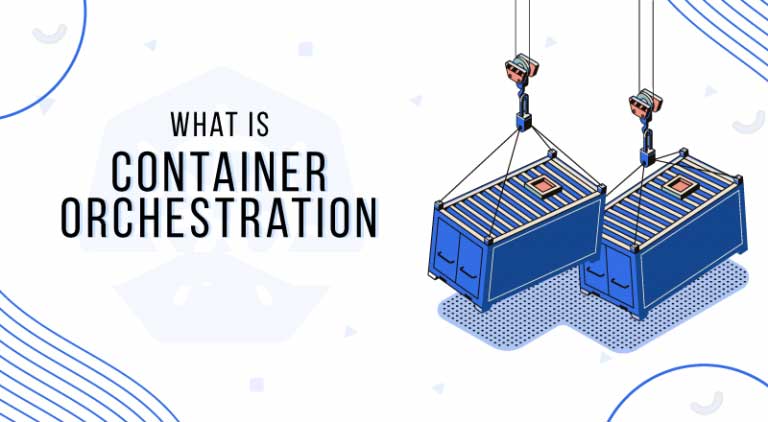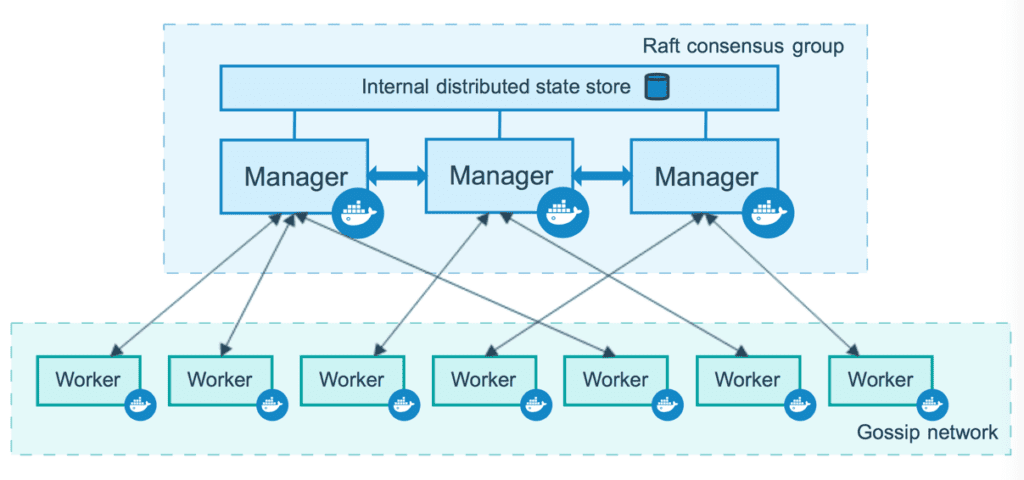
DevOps container orchestration using the docker swarm model
What is Container orchestration?
Container orchestration is the automation of a large portion of the operational labor necessary to run containerized workloads and services.
This encompasses a wide variety of tasks required by software teams to manage the lifetime of a container, such as provisioning, deployment, scaling (up and down), networking, load balancing, and other tasks.
What exactly is a swarm?
“Docker Engine 1.12 introduces swarm mode that enables you to create a cluster of one or more Docker Engines called a swarm”
The Docker Engine’s cluster management and orchestration functions are created with Swarmkit. Swarmkit is a distinct project that implements Docker’s orchestration layer and is directly utilized within Docker.
A swarm is made up of numerous Docker servers that operate in swarm mode and serve as managers and workers. A Docker host can be either a manager or a worker, or both. You specify the ideal state of a service when you build it.
Docker works to keep the intended state. For example, if a worker node fails, Docker arranges that node’s duties on other nodes.
What is Docker Swarm?
A Docker Swarm is a set of physical or virtual computers that are running the Docker program and have been configured to come together in a cluster.
You may still run Docker commands once a collection of computers has been clustered together, but they will now be executed by the machines in your cluster.
A swarm manager oversees the cluster’s activity, and machines that have joined the cluster are referred to as nodes.
What exactly is the purpose of Docker Swarm?
Docker swarm is a container orchestration tool, which allows the user to manage numerous containers distributed across several host computers.
The high degree of availability provided for apps is one of the primary advantages of running a docker swarm.
A docker swarm normally consists of numerous worker nodes and at least one manager node, which is in charge of effectively managing the worker nodes’ resources and ensuring that the cluster functions properly.
Manager & Worker Nodes

To deploy your application to a swarm, you must first submit a service definition to a management node. The manager node assigns tasks to worker nodes. Worker nodes receive and carry out tasks assigned by management nodes.
Manager nodes send tasks to worker nodes based on the number of replicas specified in the service scale. Once a job is assigned to a node, it cannot be moved to another node. It can only execute on the designated node or fail.
Load Balancing
The swarm manager employs ingress load balancing to expose the services you want to make accessible to the swarm outside. The swarm manager can provide a PublishedPort to the service automatically, or you can set a PublishedPort for the service. Any unused port can be specified. If you do not specify a port, the swarm manager allocates a port in the 30000-32767 range to the service.
How does Docker Swarm differ from Docker Compose?
Docker Swarm differs from Docker Compose in that Compose is used to configure multiple containers on the same host. Docker Swarm differs from other container orchestration tools in that it is a container orchestration tool. This implies that Docker Swarm, like Kubernetes, allows you to host containers to multiple hosts.
I hope you now have the knowledge you need to learn more about docker swarm and perhaps you can utilize it in a project in the future. Follow us on Facebook:- Facebook & Linkedin:- LinkedIn
